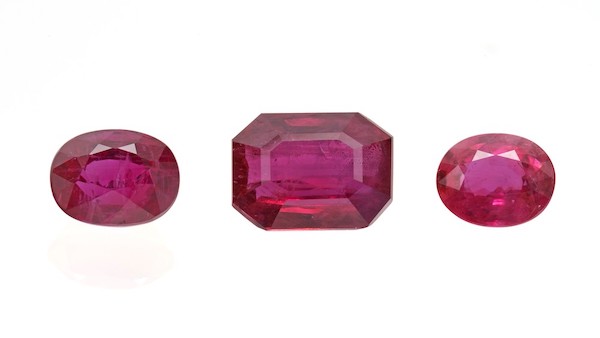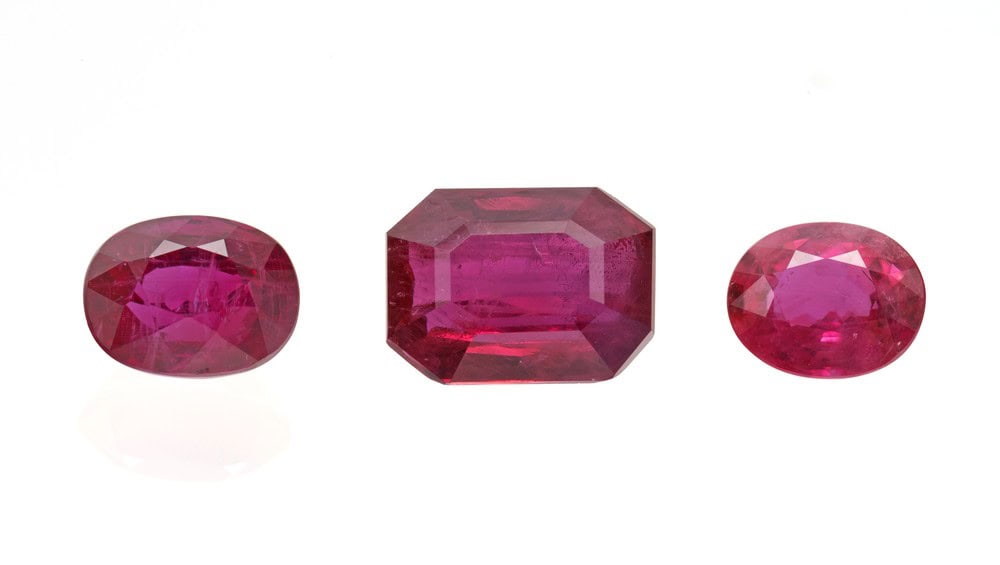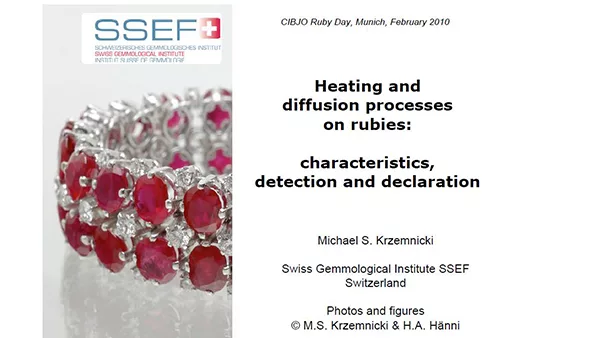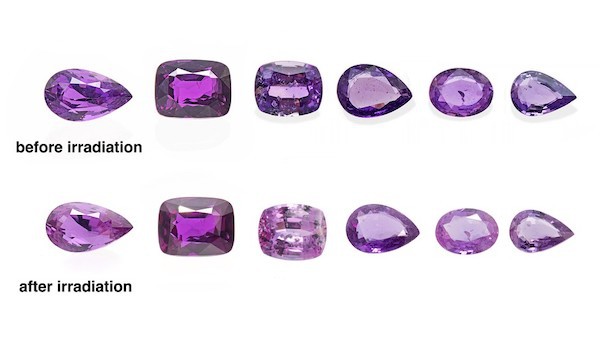
Successful dating of zircon inclusion in ruby despite intense heat-treatment
By Dr. M. Wälle, first published in Facette 29 (May 2024)

Age dating of zircon inclusions in rubies and sapphires can provide useful information for origin determination. Zircon is a mineral which usually incorporates uranium when it is formed, and this uranium is decaying to lead over time enabling age dating by measuring their ratio. Zircon is loved by geochronologists due its mechanical and temperature resistance, its relative high uranium concentration, and the absence of common lead, i.e. lead that has been incorporated during crystal formation and doesn’t come from the radiative decay of uranium. Uranium provides two independent chronometers from its two isotopes 238U and 235U which decay into 206Pb and 207Pb, respectively. Those ratios are plotted against each other and undisturbed accurate ages will fall on the Concordia line, see blue line in figure 2. Crystals which has been disturbed since their formation will fall outside this line, indicating that the ages derived from the Pb/U ratios directly cannot be trusted.
Recently, we analysed three rubies originating from Greenland at SSEF (Figure 1). All showed evident signs of heat treatment and additionally glassy residues in healed fissures and cavities. On the smallest of these rubies, we found two inclusions exposed to the surface which looked like zircons. Whereas the bigger inclusion turned out to be a former inclusion molten and converted to a silica glass, the smaller one was a tiny zircon, circa 15 μm by 60 μm in size. We analyzed this zircon with a small laser beam diameter using our GemTOF instrument, with the hope of calculating a reasonable age for the zircon, despite the fact that the ruby had been heated at high temperatures, and we were fortunately able to get two data points out of it.

Unfortunately, the data points were nowhere near the Concordia line, showing that this zircon inclusion in the Greenland ruby has not conserved its age. This was not unexpected as zircon is known to lose lead gradually when it is heated above 900 to 1000°C. In this case, the heat treatment of the ruby had also affected this zircon inclusion and it had lost some of its lead in the heating process. However, we can still get an age by back calculating the effect of this lead loss. Since both lead isotopes are lost with equal proportions and the loss was very recent (at least in geological time scales) during the heat treatment process, we can draw a straight line from the origin through our data points. The age of the zircons is represented by the intercept of this line (blue dotted line in figure 2) with the Concordia line, giving an age of 2.7 billion years. This is well in accordance with other age data from rubies from Greenland, described in literature as the oldest rubies known on Earth.


